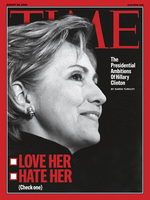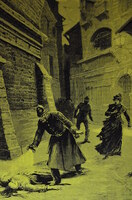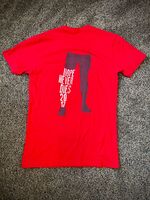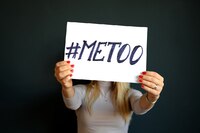Heroes and Villains
In this week we considered the role that heroes and villains play in the development of a group's collective memory. In our first two readings, we looked at how individual people become characters in collective memories, and the social function of those characters. Classical sociologist Charles H. Cooley talked about fame and the social process through which people become famous. Gary Alan Fine and Lori Ducharme extended this theme by comparing the social construction of heroes and villains, and the role that these different kinds of characters play in establishing social solidarity. We also used literary and Judaic studies scholar James Young's essay about Holocaust monuments to compare monuments that aggrandize historical figures, and "countermonuments" that construct a more reflective relationship to the past.
The Demonizaton of Hillary Clinton
I chose Hillary Clinton to represent the topic of the Construction of Heroes and Villains. Clinton is an individual who provokes more profound emotion and strong responses from members of society. Hillary Clinton's White House Historical Association biography speaks on her work before running for president in 2016. Clinton attended university where she studied law, and after graduating, she counselled the Children's Defense Fund in Cambridge and joined the impeachment staff. She then chaired the Arkansas Educational Standards Committee, co-founded the Arkansas Advocates for Children and Families, and served on the boards of the Arkansas Children's Hospital, Legal Services, and the Children's Defense Fund (Black, 2009). As First Lady, she was critiqued for some of her public service work; however, she gained admirers for her unwavering support for women worldwide and her commitment to children's issues. (Black, 2009) I included this information to exemplify the theory presented by Fine and Ducharme, which suggested that "unlike heroes, most villains are known for a single highly condemned act" (Pp. 298). During her election campaigns in 2016, she was intensely critiqued, with very little acknowledgment for the good she had done during her life. This fits into what the writers suggested when they said there was a construction of a villainous reputation and a denial of virtuous acts, which resulted in the negative identity placed onto Hillary Clinton." Particularly in societies characterized by mechanical solidarity, the public reaction to deviance provides an outlet for collective moral outrage" (pp.296) This negative image benefited those in support of Donald Trump. Through the shared disapproval of Clinton formed a Social Solidarity.
"The construction of villainous reputations depends upon society's ability to negate positive actions and characteristics and to see only those deeds and qualities that confirm the malefactor's transformed identity. In this transformation, the self is essentialized, so all that remains from the public's perspective is the evil core. "Non Personhood" describes, not the erasure of the whole person, but the denial of the virtuous aspects of self in the villain's commemoration…" (Pp.298). Clinton was labelled as deceitful; the media demonized her. People who spoke of her failed to recognize her as a person but rather a projection of the climate of the society of that time. Media platforms (news, social media) play into the commemoration of her being, building a reputation of being against the ideals of America and what it meant to be its leader. Perhaps in an alternative time or place, the collective memory and meaning of who Hillary Clinton was in the political sphere would have been perceived differently (Conributed by HS).
Jack the What?
I have selected two images related to the tragic serial killings of several women in London in 1888. Although there are many theories about the killer’s identity, he is ultimately unknown and dubbed “Jack the Ripper.” His primary targets were young women prostitutes around the impoverished Whitechapel district. One of these photos depicts the police and a distressed passerby discovering the murdered body of one of his victims. The other photo, taken over 120 years later, is an image of a barbershop belonging to a U.K. chain called “Jack the Clipper”. According to Lori Ducharme and Gary Alan Fine, being “defined as evil [is] largely irreversible” (297), and it is “difficult, if not impossible, [to] shed the deviant label altogether” (297) regardless of stigma intensity decreasing over time. Jack the Ripper has been re-identified by U.K. society from a horrific serial killer to a story-like gimmick, cited by businesses (Jack the Clipper), tourist traps (Jack the Ripper Terror Tour), and the like. Ducharme and Fine’s concept of non-personhood is challenged by Jack the Ripper. As an unidentified person, there is nothing more known about him or his possible virtues. He is not erased, and he is not denied remembrance of his (unknown) virtue. In this case, rather than overlooking a hero’s wrong-doings to highlight their achievements, a villain’s evil deeds are disregarded – not explicitly remembered or forgotten. Ironically, both cases serve the same purposes of establishing collective memory and social solidarity (contributed by AM).
Terry Fox Legacy
Protesters defaced a Terry Fox monument in Ottawa in February of 2022. Images of the defaced monument appeared online, and condemnations from multiple sources poured in, citing the act as an unforgivable insult toward a person who many consider one of the most remarkable Canadians ever to live.
He inhabits the rare status of being both remembered for the person he was in life as much as for the symbol of hope he is in death. Charles Horton Cooley wrote in Social Process that "... fame exists for our present use and not to perpetuate a dead past that myth enters so largely into it. What we need is a good symbol to help us think and feel..."
Terry Fox occupies states of being both famous in life and posthumously, and as a symbol representing all that was good and honorable about the man in life during his battle with cancer. His life, death, and likeness carry aspects of fame and symbolism that drive the type of reverence Cooley alludes to in his work, but Terry Fox is all of this and more to many Canadians.
In attempting to reconcile those remarkable people who pass into history unnoted or undocumented, even as their creations and inventions live on, Cooley could surely see Terry Fox as a noteworthy outlier. Criticisms against the protesters encompassed everything from who Terry was in life, what he represents in death, and his ongoing legacy.
Pictured is a fundraising shirt co-created by the writer for the 2017 Terry Fox Run held in Edmonton, Alberta (contributed by REL).
"Sufficiently dramatic as to be publically notable"
On February 16, 2007, Britney Jean Spears walked into Esther’s Hair Salon in Tarzana, California and asked the owner, Esther Tognozzi, to shave her head. After Esther refused her request, Britney took the hair clippers and removed her long, brunette locks. Britney’s deviant behaviour was captured by numerous paparazzi, along with a series of previous and subsequent events that ultimately culminated in her being under a conservatorship. This particular moment lives on in the collective memory because “historical reputations (particularly negative reputations) result from . . . the reconstruction of biography, through selective emphasis . . . and the evaluation of motive” (Ducharme & Fine, p. 297). Britney Spears burst into the public eye as a bubbly and sweet child, re-emerged as a teenager, and despite enjoying a decade of success and accolades, this one event caused “much of [Britney’s] identity [to] be treated as nonexistent” (Ducharme & Fine, p. 299). Hair has long been a signifier of and mode of expression of femininity; Britney’s radical break from her hair “emphasize[d] the demonic activity” (Ducharme & Fine, p. 299) she had been engaging in and solidified her fall from grace. Luckily for Britney, Ducharme and Fine describe the creation of historical reputation as “a continuous, enduring, and potentially contested process” (Ducharme & Fine, p. 298). With the recent dissolution of her conservatorship, she will be an autonomous participant in creating her reputation (contributed by KLB).
A Hollywood Villain
Harvey Weinstein was a film producer and co-founder of entertainment company Miramax as well as the Weinstein Company film studio. In 2017 over 80 women made SA allegations against Weinstein, with some of these allegations dating as far back as the 1970s. In 2020 Weinstein was sentenced to 23 years in prison. Wiestiens reputation as a villain was solidified by the worldwide condemning of his actions. According to Ducharme and Fine, this can be seen as an example of society reaffirming its shared intolerance for defiant acts (in this case SA) through tightening its moral boundaries and punishing deviance. Weinstein's legacy being reduced to that of a sexual predator exemplifies the transformation into non-personhood while the process of demonization associates him with only evil. The social solidarity that followed sparked the #metoo movement and increased awareness and support for SA survivors. (RC)





